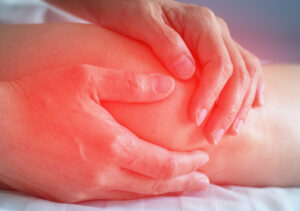
Knee pain from Arthritis, gout or infections.
Gout is a form of arthritis that affects millions of people worldwide. If you’re experiencing sudden, intense joint pain, it’s essential to understand whether it could be gout and how to manage it properly. In this article, we will explore how to differentiate gout pain and provide three steps to deal with it.
Recognizing the Symptoms
Gout typically affects the joints, most commonly the big toe, but it can also occur in other joints like the knees, elbows, and fingers. To differentiate gout pain from other conditions, let’s review the following symptoms:
- Sudden and Intense Pain: Gout pain comes on suddenly, reaching its peak within a few hours. It is usually excruciating, making even the lightest touch unbearable.
- Redness and Swelling: The affected joint may look red, swollen, and feel warm to the touch.
- Limited Range of Motion: During a gout flare, you may experience stiffness and find it difficult to move the affected joint due to the pain and swelling.
- Previous Episodes: If you’ve experienced similar symptoms in the past, especially in the same joint, there’s a higher likelihood of it being gout.
If you experience these symptoms, contact your rheumatologist for an accurate diagnosis and treatment. Your rheumatologist will review your medical history, conduct a physical examination, and may recommend certain blood tests to confirm the presence of gout. Timely intervention is key to managing gout effectively.
Self-management
Dealing with a gout attack can be challenging, but there are several self-care strategies to alleviate symptoms. During a gout attack, pain relief becomes a primary focus, thus it is essential to contact your rheumatologist for proper treatment. In addition, try these self-management strategies:
- Apply Cold Compresses: Use ice packs or cold compresses to the affected joint to reduce inflammation and numb the area. Wrap the ice pack in a cloth to protect your skin and apply it for 15-20 minutes at a time, several times a day.
- Elevate the Affected Joint and Practice Gentle Range-of-Motion Exercises: Elevating the affected joint above heart level can help reduce swelling and relieve pain. Pillows or cushions make good props to lift the joint while sitting or lying down. This promotes proper circulation and reduces pressure on the inflamed area. After the acute pain subsides, gentle range-of-motion exercises can help improve joint mobility and prevent stiffness. Your rheumatologist can provide you the best exercises for your situation.
- Follow a Gout-Friendly Diet and Stay Hydrated: Limit purine-rich foods such as organ meats, shellfish, beer, and sugary beverages. Also, drink at least eight cups (64 ounces) of water daily to help flush out excess uric acid from your system.
Consult your rheumatologist or healthcare provider for personalized advice and guidance. Together, you can develop a comprehensive plan that suits your specific needs and helps you manage gout effectively. Be well and stay healthy!

